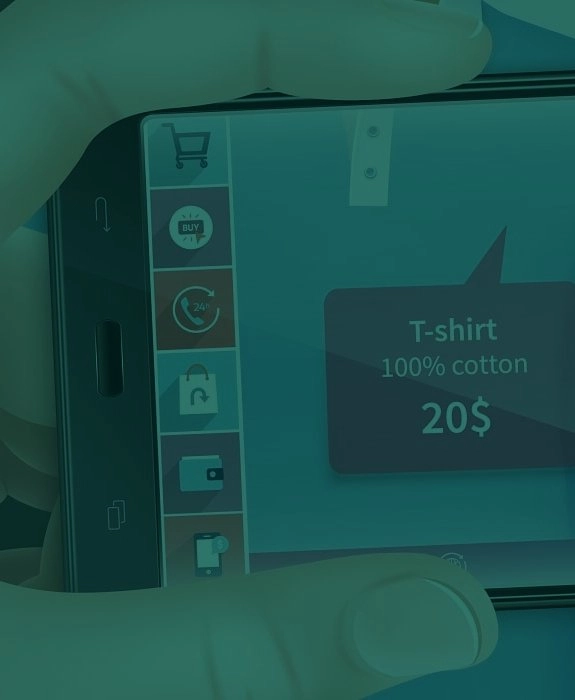Augmented Reality (AR) is a technology that superimposes a computer-generated image on a user’s view of the real world, thus providing a composite view. AR got popular primarily due to Instagram’s filters that put animal ears on our faces, and Pokemon Go, the game that superimposed the famous pocket monsters in our day-to-day environments. However, AR isn’t mainstream yet. Apple CEO Tim Cook said, “AR can be really great … We are high on AR for the long run; we think there’s great things for customers and a great commercial opportunity.”
We know that the gaming space and the social media space have already started using AR tech. But what about the shopping space? Well, it turns out retailers are rapidly adopting this technology, releasing mobile apps and creating AR “booths” to delight and engage customers. According to Retail Perceptions, 71% of shoppers would shop at a retailer more often if they were offered augmented reality, and 61% of shoppers prefer to shop at stores that offer AR, over the ones that don’t. The study was conducted on a sample space of 1,062 people across the United States, to learn the ways shoppers perceived AR. The study also showed that 40% of the shoppers would be willing to pay more for a product if they could experience it through AR!
Mobile apps are a great way to get shoppers to experience augmented reality, particularly since today’s mobile phones have the tech and the cameras to support app-driven AR experiences. American Apparel, a popular US-based clothing brand, was one of the first to capitalize on the emerging technology. Their app allows you to scan promotional material—an image of a clothing that pops up surrounded by information in the form of customer reviews, videos, slideshows, and the ever-present share button for social media. You can then adjust a slider to change the color of the clothing and then, if satisfied, click the “Buy Online” button to have the item shipped to your home or just add it to a wishlist for purchasing it later.
Charlotte Tilbury is another brand that has completely revolutionized our shopping experience through the use of AR. It has created a highly advanced real-time tracking system and a realistic visualization AR mirror for their makeup product line: foundation, blusher, eyeshadow, eyeliner, mascara, lipliner, lipstick. In the mirror, contouring techniques are added on to a real-time moving face capture. The customer sees before and after real-time videos of the makeup applied almost perfectly. The “Magic Mirrors” allow customers to virtually try out each one of Charlotte’s iconic “10 Makeup Looks.”
AR can also be used to bring the in-store experience to a customer’s home. This has been achieved by the Swedish furniture manufacturer IKEA, with their IKEA Place app. The purpose of the AR kit is to place true to scale IKEA furniture in your home space. All you have to do is scan your space, browse the IKEA store for furniture and “place” the chosen item in your space as machine learning. This process completely eliminates the need to measure your space to figure out what fits and what doesn’t!
AR is undoubtedly here to stay and will soon be a major part of our shopping experience. In fact, you can try it out today with Amazon’s AR app. Shopping just got cooler!
Stay ahead of the game with our helpful resources

4 digital solutions to address common application performance issues
High network latency, memory leaks, slow page loads, heavy CPU usage, and unresponsive servers are all typical performance issues we’ve experienced at some point when using or accessing digital applications. With how easy they occur in projects across verticals, you might be wondering whether the development teams behind these programs have done enough due diligence prior to the release. But human errors and oversight aren’t always the culprit. The reality is that while developers can strive to develop a fully functioning program with virtually no apparent faults upon delivery, no software is truly error-free. Even the most rigorously tested applications

6 useful tips for creating more robust application lifecycle management
As digital technology becomes the norm, software acquisition is now key to gaining a competitive edge in today’s market. Be it as a value offering tailored to consumers or a productivity tool to run complex processes, custom software undeniably helps companies drive growth and deliver value more efficiently. Just as necessary as having a proprietary application is prescribing a standard procedure to govern and maintain its utility. This is to ensure that your business can develop or adopt the right type of software—one that can fully cater to your business needs while keeping disruption to a minimum across critical milestones.

5 major roadblocks businesses must overcome when transitioning into a new software environment
As the business landscape becomes increasingly saturated, staying ahead of the curve often means embracing disruptive technologies to meet the fickle market demands. In most cases, this entails knowing when to pivot your current strategy to an entirely new solution. But recognizing the importance of digital shift is one thing; implementing the necessary IT upgrade is another. A global survey by Deloitte has found that although 87% of companies manage to identify the impact of digital trends on their industries, only 44% have adequately prepared for the coming disruptions. This vast disconnect between organizational expectations and conditions in the field

Is cloud computing the answer to better software development?
Cloud computing is perhaps not a term often heard in daily conversations, but it is one with a far-reaching impact on our technological needs. From expansive options of online data storage to numerous suites of web-based productivity tools like Google Workspace, nearly everyone has used a cloud-enabled technology. Over the last decade, this high degree of versatility also underpins the rapid cloud uptake among businesses. In fact, one survey has found that 94% of companies have already shifted their computing workloads on cloud platforms to varying extents. Unsurprisingly, the market size for cloud technology continues to grow exponentially. With a



